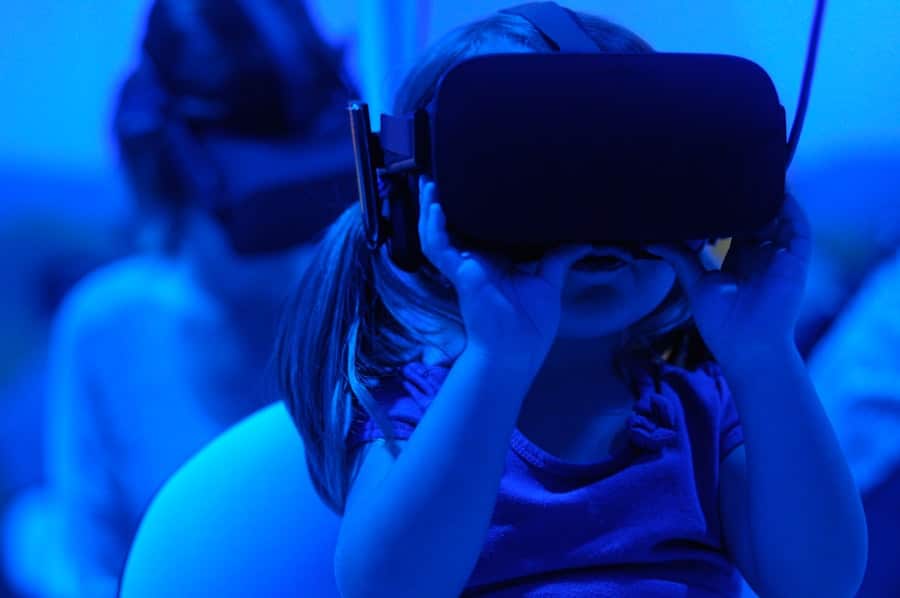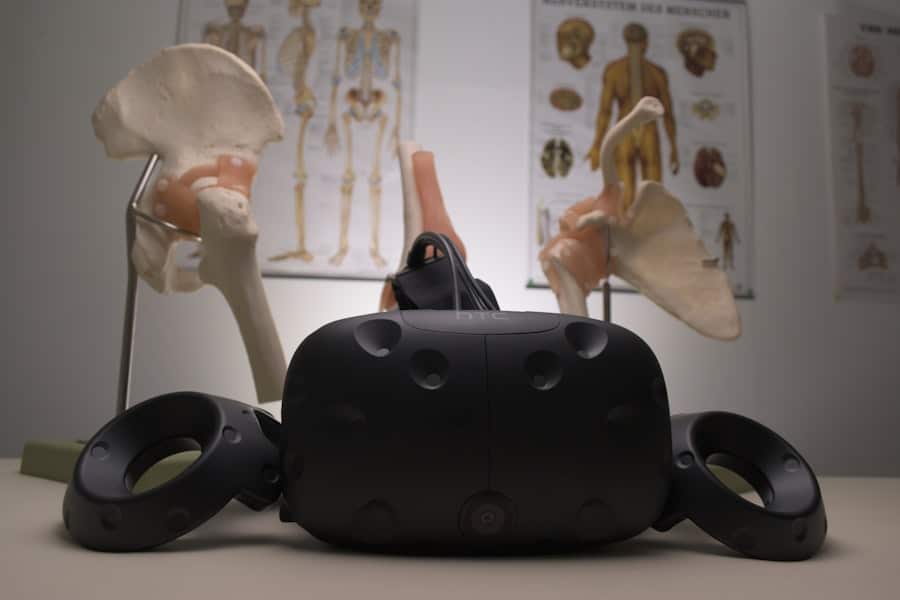Virtual Reality (VR) has emerged as a transformative technology, reshaping various fields, including education, entertainment, and healthcare. One of the most compelling applications of VR is in the realm of historical preservation. By creating immersive environments that replicate historical sites and events, VR offers a unique opportunity to engage with the past in ways that were previously unimaginable.
This technology not only enhances our understanding of history but also plays a crucial role in preserving cultural heritage for future generations. As we delve into the intersection of VR and historical preservation, it becomes evident that this innovative approach is redefining how we interact with our shared past. The significance of historical preservation cannot be overstated.
It serves as a bridge connecting us to our ancestors, allowing us to learn from their experiences and understand the evolution of societies over time. However, many historical sites face threats from natural disasters, urban development, and neglect. In this context, VR emerges as a powerful tool that can simulate these sites, providing an alternative means of experiencing history without the physical constraints that often limit access.
By leveraging VR technology, historians, educators, and preservationists can create dynamic representations of historical events and locations, ensuring that the stories of our past remain alive and accessible.
Key Takeaways
- VR technology is revolutionizing historical preservation by providing immersive experiences and access to inaccessible sites.
- Virtual tours of historical sites allow people to explore and learn about cultural heritage from anywhere in the world.
- Interactive learning experiences in VR engage users in a way that traditional methods cannot, making history more accessible and engaging.
- VR is being used for preservation and restoration efforts, allowing for detailed documentation and analysis of historical sites.
- Immersive historical reenactments in VR provide a unique way to experience and understand the past, bringing history to life in a new way.
- VR technology is shaping the future of historical preservation, offering new possibilities for cultural heritage preservation and education.
Virtual Tours of Historical Sites
Exploring Historical Sites in High Resolution
Platforms like Google Arts & Culture have partnered with various institutions to offer virtual tours of renowned locations such as the Palace of Versailles and the British Museum. Users can navigate through these spaces, examining artifacts and artworks in high resolution while receiving contextual information about their historical significance.
Users can look around in 360 degrees, interact with digital objects, and even hear ambient sounds that evoke the atmosphere of the site.
Fostering a Deeper Connection to History
This level of engagement fosters a deeper connection to history, as individuals can visualize themselves in these spaces rather than merely reading about them in textbooks. Moreover, virtual tours can be designed to cater to various audiences, including students, tourists, and researchers, making history more accessible and engaging for everyone.
Interactive Learning Experiences
Beyond virtual tours, VR facilitates interactive learning experiences that deepen users’ understanding of historical contexts. Educational institutions are increasingly incorporating VR into their curricula to provide students with hands-on learning opportunities. For example, programs like “The Virtual Reality History Project” allow students to step into pivotal moments in history, such as the signing of the Declaration of Independence or the construction of the Great Wall of China.
By actively participating in these events, learners can grasp complex historical concepts more effectively than through traditional lectures. Interactive experiences can also include gamified elements that encourage exploration and critical thinking. For instance, students might be tasked with solving historical mysteries or making decisions that impact the outcome of a simulated event.
This approach not only makes learning more enjoyable but also cultivates skills such as problem-solving and collaboration. As students engage with history in a dynamic way, they are more likely to retain information and develop a lasting interest in the subject matter.
Preservation and Restoration Efforts
VR technology is not only beneficial for educational purposes but also plays a vital role in preservation and restoration efforts. Historical sites often require extensive maintenance and restoration work to combat deterioration caused by environmental factors or human activity. By utilizing VR modeling techniques, preservationists can create detailed digital replicas of these sites before any physical restoration takes place.
This allows for careful planning and analysis of potential restoration methods without risking damage to the original structure. For example, the use of photogrammetry—a technique that captures multiple images from different angles—enables the creation of accurate 3D models of historical buildings. These models can be used to simulate various restoration scenarios, helping experts determine the best course of action while preserving the site’s integrity.
Additionally, VR can serve as a valuable tool for public engagement during restoration projects. By allowing community members to visualize proposed changes through immersive simulations, stakeholders can gather feedback and foster a sense of ownership over their cultural heritage.
Access to Inaccessible Sites
One of the most significant advantages of VR in historical preservation is its ability to provide access to sites that may be physically inaccessible due to geographical constraints or safety concerns. Many historical locations are situated in remote areas or are at risk due to ongoing conflicts or natural disasters. In such cases, VR offers a viable solution by allowing individuals to experience these sites virtually without the need for travel.
For instance, after the devastating earthquake in Nepal in 2015, many ancient temples were severely damaged or destroyed. Through VR technology, organizations like the Kathmandu Valley Preservation Trust have worked to create virtual representations of these cultural landmarks, enabling people worldwide to explore them despite their physical destruction. This not only raises awareness about the importance of preserving cultural heritage but also fosters a sense of global solidarity in protecting these irreplaceable sites.
Moreover, VR can bridge gaps for individuals with disabilities who may find it challenging to visit historical sites due to mobility issues or other barriers. By providing an immersive experience that transcends physical limitations, VR democratizes access to history and ensures that everyone has the opportunity to engage with their cultural heritage.
Immersive Historical Reenactments
Immersive Reenactments of Historical Events
One fascinating application of VR in historical preservation is the creation of immersive reenactments that allow users to experience significant events as if they were present at the time. These reenactments can range from pivotal battles to cultural ceremonies, offering participants a unique perspective on history that goes beyond mere observation. For example, projects like “The Battle of Gettysburg” allow users to witness this crucial Civil War battle from multiple viewpoints, providing insights into the strategies employed by both Union and Confederate forces.
Enhancing the Experience with Storytelling
These immersive experiences are often enhanced by incorporating narratives and character-driven storytelling elements. Users may assume the roles of historical figures or ordinary citizens living through these events, making choices that influence their experience within the simulation. This approach not only captivates users but also encourages empathy by allowing them to understand the motivations and challenges faced by individuals in different historical contexts.
Educational Applications of Immersive Reenactments
Furthermore, immersive reenactments can serve as powerful educational tools for schools and museums. By engaging students in active learning through role-playing and decision-making scenarios, educators can foster a deeper understanding of historical events while promoting critical thinking skills.
Cultural Heritage Preservation
Cultural heritage encompasses not only physical artifacts but also intangible aspects such as traditions, languages, and practices that define communities. VR technology has shown great promise in preserving these elements by creating digital archives that document cultural practices and narratives. For instance, initiatives like “The Virtual Museum of Canada” aim to showcase Indigenous cultures through immersive experiences that highlight traditional storytelling methods and ceremonies.
By capturing these cultural expressions in virtual formats, communities can ensure their heritage is preserved for future generations while also promoting awareness among broader audiences. This is particularly important for marginalized groups whose histories may have been overlooked or misrepresented in traditional narratives.
Moreover, VR can facilitate cross-cultural exchanges by allowing users from different backgrounds to experience each other’s traditions and histories. This fosters mutual understanding and respect while highlighting the interconnectedness of human experiences across time and space.
Future of VR in Historical Preservation
As technology continues to evolve at a rapid pace, the future of VR in historical preservation holds immense potential for further innovation and impact. Advancements in hardware and software will likely lead to even more realistic simulations and interactive experiences that blur the lines between reality and virtuality. For instance, improvements in haptic feedback technology could enable users to feel textures or vibrations associated with historical artifacts or environments, enhancing immersion.
Additionally, as artificial intelligence (AI) becomes more integrated into VR applications, personalized learning experiences could become commonplace. AI algorithms could analyze user interactions and preferences to tailor content specifically to individual interests or learning styles. This level of customization would make historical education more engaging and effective for diverse audiences.
Furthermore, collaborations between historians, technologists, and cultural institutions will be essential in shaping the future landscape of VR in historical preservation. By working together, these stakeholders can ensure that technological advancements align with ethical considerations surrounding representation and accessibility. In conclusion, as we look ahead, it is clear that VR will play an increasingly vital role in preserving our shared history and cultural heritage.
Through innovative applications ranging from virtual tours to immersive reenactments, this technology has the power to transform how we engage with our past while ensuring that it remains relevant for generations to come.
A related article to how VR is being used to preserve and experience historical sites is “Discover the Best Laptop for Remote Work Today.” This article discusses the importance of having a reliable laptop for remote work and provides recommendations for the best laptops currently available. To read more about this topic, you can check out the article here.
FAQs
What is VR?
VR stands for virtual reality, which is a computer-generated simulation of an environment that can be interacted with in a seemingly real or physical way by a person using special electronic equipment, such as a helmet with a screen inside or gloves fitted with sensors.
How is VR being used to preserve historical sites?
VR is being used to create digital replicas of historical sites, allowing people to explore and experience these sites virtually. This technology helps to preserve the sites by creating a digital record that can be accessed and enjoyed by people all over the world.
What are the benefits of using VR to experience historical sites?
Using VR to experience historical sites allows people to explore and learn about these sites in a way that may not be possible in person. It also helps to preserve the sites by reducing physical foot traffic and potential damage.
Are there any limitations to using VR for historical preservation?
While VR can provide a realistic and immersive experience, it may not fully capture the true essence and atmosphere of a historical site. Additionally, not everyone has access to VR technology, which can limit the audience that can experience these virtual historical sites.



